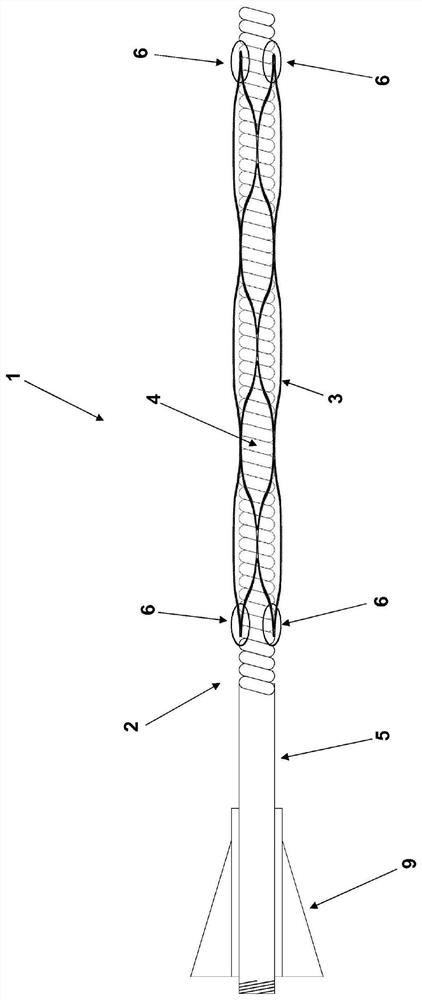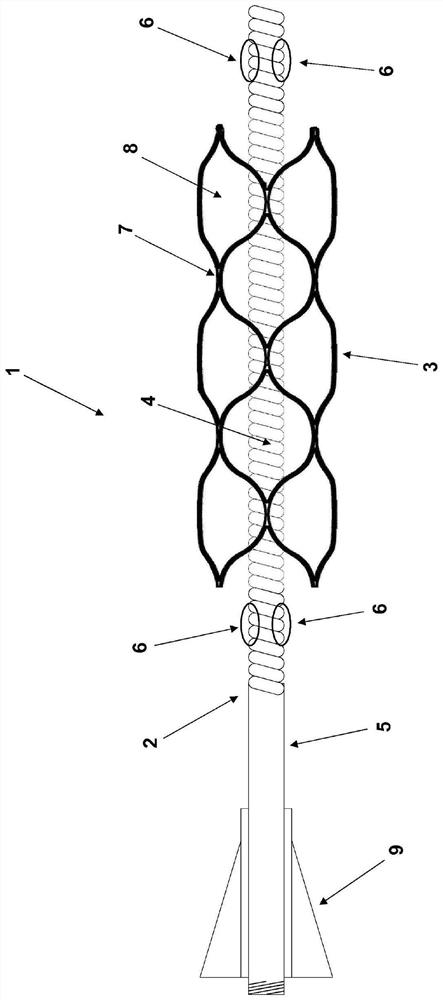Device for introducing implants
A technology for implants, internal implants, applied in the field of devices for introducing implants, which can solve problems such as blocking blood flow, compressing implant size limitations, damaging the walls of blood vessels, etc.
- Summary
- Abstract
- Description
- Claims
- Application Information
AI Technical Summary
Problems solved by technology
Method used
Image
Examples
Embodiment Construction
[0054] exist figure 1 In , the shaft 2 , as part of the device proposed by the present invention, is shown in side view, wherein in the selected representative illustration left means proximal and right means distal. On the shaft 2 there is a proximal region 5 of considerable stiffness and a flexible coil 4 forming the distal region of the shaft 2, the proximal end of which is formed as a connecting element 9 in the form of a wire luer lock connector.
[0055] figure 2 A device 1 according to a first embodiment is shown. In this case, the shaft 2 carries an implant 3 consisting of a laser-cut stent. The implant 3 is connected to the coil 4 of the shaft 2 by means of several connection points 6 . The connection points 6 are of adhesive design and can be detached by applying a solvent. Since the gaps between the windings of the coil 4 are sufficiently permeable, solvent can be brought to the connection point 6 through the inside of the shaft 2 .
[0056] Once the connectio...
PUM
 Login to View More
Login to View More Abstract
Description
Claims
Application Information
 Login to View More
Login to View More - R&D
- Intellectual Property
- Life Sciences
- Materials
- Tech Scout
- Unparalleled Data Quality
- Higher Quality Content
- 60% Fewer Hallucinations
Browse by: Latest US Patents, China's latest patents, Technical Efficacy Thesaurus, Application Domain, Technology Topic, Popular Technical Reports.
© 2025 PatSnap. All rights reserved.Legal|Privacy policy|Modern Slavery Act Transparency Statement|Sitemap|About US| Contact US: help@patsnap.com



